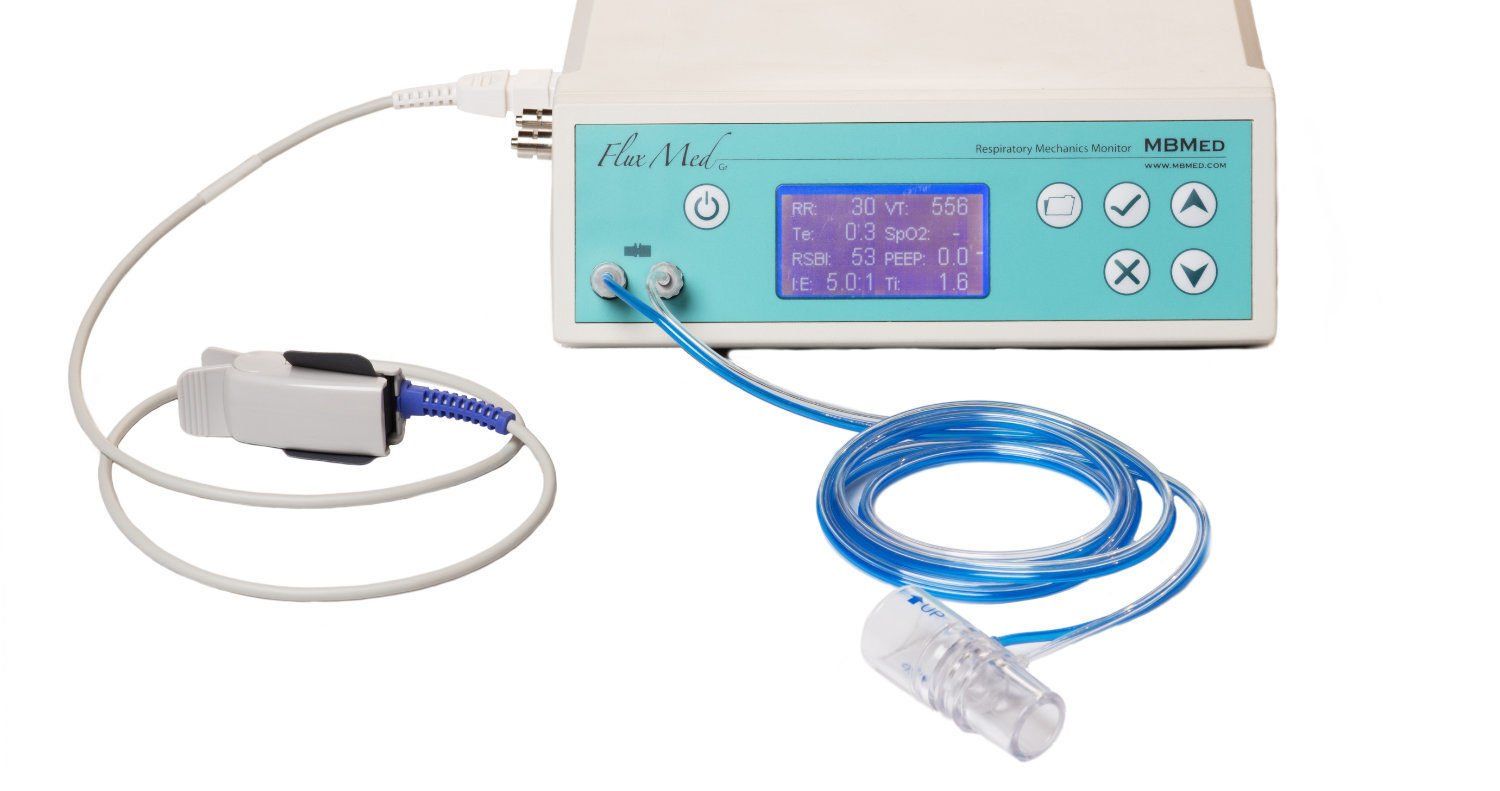Respiratory Monitors
FluxMed GrT

The FluxMed GrT main features:
- Gastric Pressure
- Esophageal Pressure
- More than 40 Parameters
- 7 Signals
- 3 Loops
- Stress Index (SI)
- Pressure Time Product (PTP) Plot
- Work of Breathing (WOB) – Campbell Diagram
- Tendency Graph
- Pimax – Pemax – P0,1 Measurement
- Signals Records
The FluxMed GrT monitor measures the esophageal and gastric pressure simultaneously along with the rest of the respiratory parameters in a fast, reliable and simple way.
It makes possible the monitoring of the transdiaphragmatic pressure in order to evaluate the diaphragmatic activity in the respiratory cycle. It is a fundamental tool that allows to have a complete vision and evaluation of the patient’s respiratory mechanics and also for clinical investigational purposes.
Gastric pressure
The gastric pressure allows the detection of diaphragmatic dysfunctions, paradoxical efforts, measure the work of breathing contributed by the diaphragm and determine which is the most efficient mechanical ventilation mode.
Esophageal Pressure
The measurement of esophageal pressure makes it possible to measure the most relevant parameters in the quantification of the effort done by the respiration muscles, in mechanically ventilated patients. A patient’s ineffective respiratory efforts can be detected and autoPEEP measured. It has been shown that using esophageal pressure reduces the patient’s weaning time.
Ventilated Patients
FluxMed GrT respiratory mechanics monitor can be directly connected to an intubated and ventilated patient in assisted or controlled ventilation, enabling a detailed analysis of synchronicity between the patient and the respirator.
Weaning
FluxMed GrT respiratory mechanics monitor shows the most important parameters on screen to help determine the success of a patient’s weaning. It makes it possible to carefully carry out a patient’s follow-up, in the process of not needing further respiratory assistance.
T-tube test
Respirators lose monitoring capacity once they are disconnected from the patient. The FluxMed monitor allows to continue the monitoring of respiratory mechanics during T-Tube tests, allowing the professional to know the evolution of the respiratory mechanics of the patient during the test.
Flow Sensor
The flow sensor is designed to perform a proximal measurement, thus avoiding the error produced by the distensibility of the respiratory tubes.
Non-Invasive Ventilation (VNI)
It is particularly useful for monitoring ventilated patients in a non-invasive way. The flow sensor easily adapts to face masks making it possible to monitor patients with CPAP or BIPAP.
Spontaneous Respiration
Connecting the flow sensor to a mask allows spontaneous-breathing monitoring, thus easily obtaining accurate readings of the patient’s condition making it possible to objectively choose whether there is or not a need to intubate and mechanically assist breathing. It allows for a thorough follow-up of the patient.
PC Connectivity
FluxMed GrT respiratory mechanics monitor comes with an USB data transfer connector, making it possible to record long lasting examinations with measurements and tendencies of the calculated parameters.
MBMED: Av. Santa Fé 1955 (B1640IFG) Martinez, Bs. As., Argentina Phone: +54 11 5258 8787 Email: info@mbmed.com